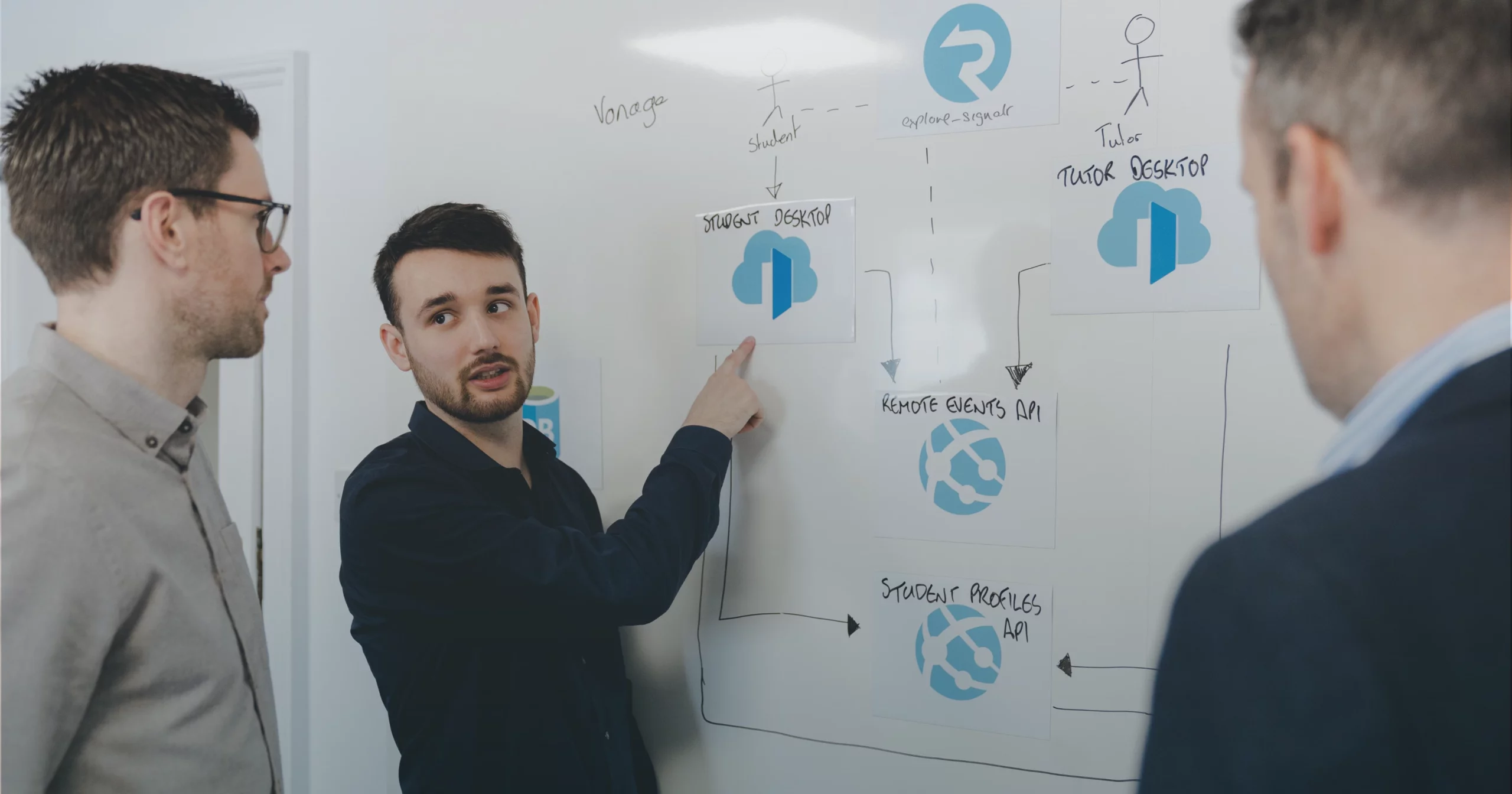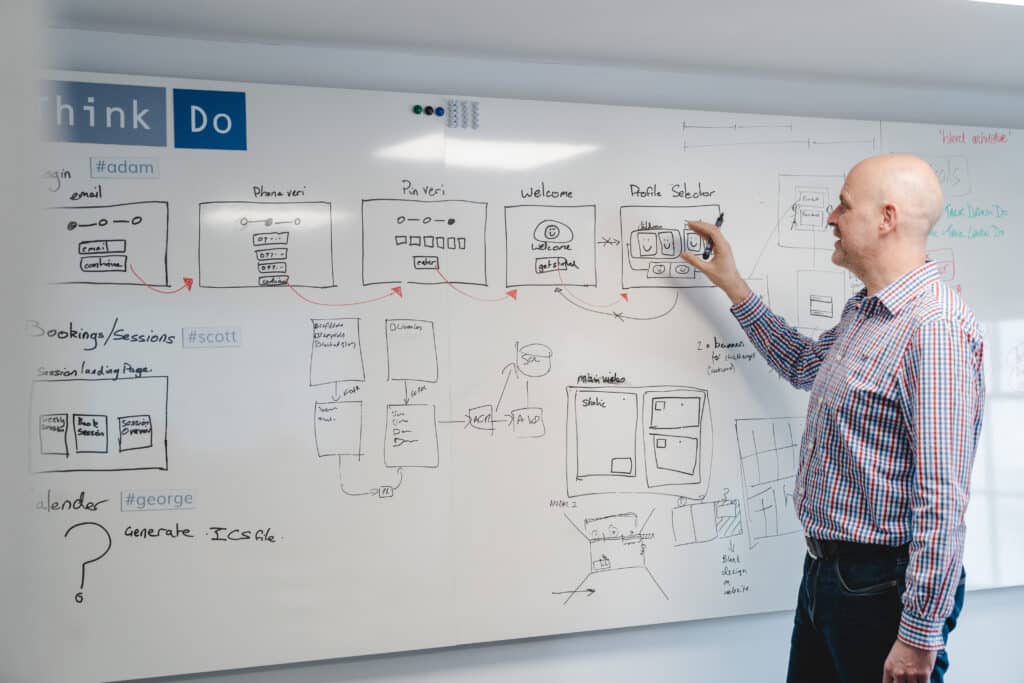5 Steps to Migrating to Cloud Native Application Architectures

Recent data shows that 88% of businesses were using cloud application development services in 2018 and a further 10% were in the trial stage.1 Transitioning to cloud-native technologies is becoming the norm, and is essential if you want to run your business efficiently and remain competitive in your industry.
Adopting cloud infrastructures is a smart investment to make when you’re upgrading the applications your team is already familiar with. It’s also a great way to transition to a fully cloud-native process by providing new, seamless integrations where needed.
What is cloud migration?
Put simply, cloud migration is the process of moving applications, data, and other IT elements to a cloud computing infrastructure. For example, you may decide to move all of your business applications from a local on-premises data center to the public cloud.
Common cloud migration challenges
Migrating to cloud native technologies can seem daunting and complex, especially when there are so many factors to consider. Common cloud migration challenges include:
- Financial cost
- Adoption resistance
- Skill shortage
These challenges can be overcome by having a solid cloud migration strategy in place. The process can also be made simpler by partnering with an experienced solutions provider.
In this guide, we are going to discuss five steps you should take when migrating to cloud-native application architectures to ensure a smooth transition.

Step 1: Understand your motivations
The first step to successful cloud migration is understanding why you’re choosing to migrate, and what your business objectives are. This will make sure that you are focusing on your core objectives and goals throughout the migration process.
4 reasons to migrate to the cloud
- Reduce costs: Cloud computing is one of the most cost-effective ways to operate, maintain, and upgrade your IT infrastructure. In a recent survey, 95% of respondents said that cloud native technologies would reduce both setup and maintenance costs.2
- Improve security: Cloud architecture is more secure than on-premises, and both private and public cloud providers invest heavily in security innovation.
- Support agile working: Working practices are changing rapidly, and approximately 71% of businesses are adopting agile approaches.3 Cloud platforms support flexible working as they can be accessed from anywhere, on a wide range of devices.
- Gain a competitive advantage: Cloud native technologies allow you to launch new applications and services quickly. This means you can meet customer expectations and stand out from the competition.
Suggested reading: Check out our blog post to learn how cloud native applications take businesses forward.
Pro tip: Building cloud native software and complying with the necessary business governance can be difficult. Partnering with an experienced cloud solutions provider will remove this stress and ensure a seamless transition.
Step 2: Analyse your current applications
Analysing your current applications and understanding their limitations is a crucial step in the cloud migration process. This will allow you to assess the operational value of the new system by comparing it to your existing applications.
You will gain a visible overview of your systems, allowing you to see what’s needed to close the gap between what you currently offer and what you’re aiming for. This helps you see what’s needed next, whether that’s innovating new cloud-native software applications or modernising legacy applications.
There are a few key tells that you’re dealing with a legacy system:
- They operate unreliably/perform poorly.
- They’re nearing end-of-life, making continued support challenging.
- Upgrades and updates are costly, slow and require workarounds.
Pro tip: To learn more about how legacy systems are costing your business growth, check out our eBook.
Step 3: Create a game plan
Now that you know what needs to be done, you have to outline what the best practice might be. This could be anything from determining whether apps should be migrated or modernised, to which apps to scrap and replace, and what resources each process will take.
You will also need to decide whether a microservices architecture or monolithic applications are more suited to your business needs.
- Monolithic applications: Built as a single unified unit which makes it easier to operate and manage. However, this means the entire application must be updated when you want to update part of the service. Therefore, a lot of businesses choose to migrate traditional monolithic applications to a microservices architecture.
- Microservices architecture: A collection of smaller, independent services that are maintained separately, meaning you won’t need to update the entire application to update an individual service.
The key to creating a solid cloud migration plan
Mapping out everything that will go into your migration and creating a plan is a time-consuming and difficult process.
Finding which cloud computing platforms fit your needs is integral to a solid cloud migration plan. Microsoft Azure containerised development support, as well as their advanced security provisions, make it the ideal choice for digital transformations on any scale.
Pro tip: Building cloud native software and complying with the necessary business governance can be difficult. Partnering with an experienced cloud solutions provider will remove this stress and ensure a seamless transition.
Step 4: Transform your applications
Now is the time to start migrating, modernising, and transforming your existing applications to a cloud-native system.
The migration will be tailored to your business needs. For example, you may choose to migrate specific applications or move your entire infrastructure to the cloud.
The importance of having a security strategy
You also need to create a strategy to ensure that security and regulatory compliance requirements are met.
According to experts at Cloud Academy: “Cloud cybersecurity requires a different approach to security than on-premises. You’ll need to think about traffic within your cloud, but also access to the cloud from all your users, and how to leverage “least privilege” access.”4
Why you should partner with a solutions provider
This stage of the process requires real expertise as well as the option of managed application support to ensure your applications run smoothly. You should consider hiring IT specialists with expertise in cloud software development and building applications.
Step 5: Keep growing!
When your migration is complete, you should look to ensure your applications continue to perform well and that you’re taking full advantage of your cloud-native system.
You can also start to develop new cloud-native applications to scale your business seamlessly and take advantage of new opportunities as they arise.
Maximise your return on investment
A solutions provider can ensure you’re maximising the benefit potential of your cloud system. They can also build and run new applications and help you adopt cloud-native technologies in the future, e.g. continuous software delivery.
When you partner with an expert solutions partner (one with cloud-native computing foundations and vendor-neutral certifications) they will take the time to get to know your business and take a personalised approach when building application software.
Suggested reading: Want to learn what to look for in bespoke application support? Check out our recent blog.
Talk Think Do makes cloud migration a breeze
Migrating to cloud native application architectures can be a challenge, but it doesn’t need to be! Talk Think Do develops cloud solutions that are critical to business development. From creating bespoke applications that fit your needs to providing managed support after go-live, we’ll ensure you’re making the most of your cloud-native approach, allowing your business to seamlessly grow at scale.
Our team can help you exploit new business opportunities by innovating your existing applications so you can reduce risk and increase agility. We support long-term growth by offering personalised cloud migration strategies coupled with dedicated customer support.
Book a consultation with our experts if you would like to learn more about migrating to cloud native technologies and its benefits for your business.
1 https://www.cloudindustryforum.org/
Get access to our monthly
roundup of news and insights
You can unsubscribe from these communications at any time. For more information on how to unsubscribe, our privacy practices, and how we are committed to protecting and respecting your privacy, please review our Privacy Policy.
See our Latest Insights
Working as One Team: How Our Business Analysts Bridge Vision and Delivery
When clients partner with us, they often expect engineers and designers. But one of the most powerful roles behind a successful digital product is often less visible: the Business Analyst (BA). At Talk Think Do, BAs aren’t just requirement-gatherers. We’re connectors, between vision and execution, users and features, partners and platforms. In the recent delivery…
Implementing RAG AI Search on On-Premise Files with our AI Search Accelerator
As demand for AI‑powered tools like Microsoft Copilot grows, many organisations are asking the same question: “How can we harness the power of generative AI without moving our sensitive data to the cloud?” In this guide, we’ll explain why Retrieval‑Augmented Generation (RAG) is so effective for on‑premise data and walk through a practical approach using…
Using AI to Strengthen ISO 27001 Compliance
Preparing for our ISO 27001:2022 recertification, and a transition from the 2013 standard, was no small task. As a custom software company handling sensitive client data, we hold ourselves to high standards around security and compliance. But this year, we approached the challenge differently. We built and deployed a custom AI Copilot agent to help…
Legacy systems are costing your business growth.
Get your free guide to adopting cloud software to drive business growth.






